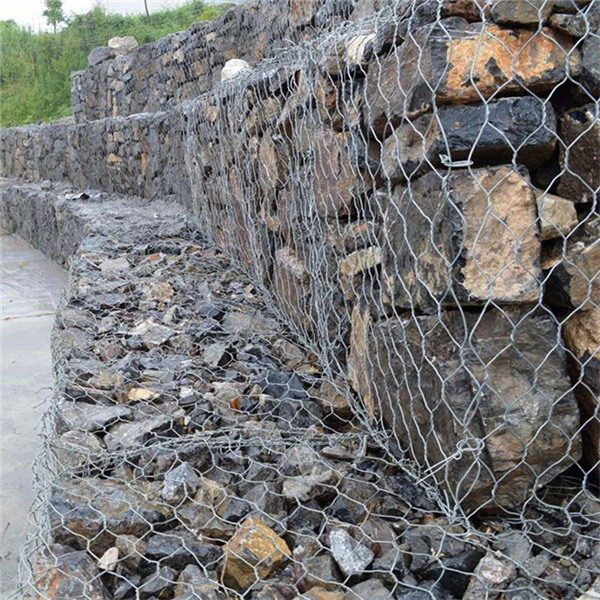Dis . 03, 2024 17:13 Back to list
China's Innovative Gabion Cylinder Solutions for Sustainable Construction and Landscaping
The Versatility of Gabion Cylinders in Modern Construction
Gabion structures have emerged as a popular and effective solution in contemporary construction, particularly in regions where aesthetics and durability are critical. Among the various forms of gabion structures, the gabion cylinder stands out for its versatility and functionality. Constructed from wire mesh and filled with materials such as stones, rocks, or recycled concrete, gabion cylinders serve a multitude of purposes, making them invaluable in both civil engineering and landscape architecture.
What are Gabion Cylinders?
Gabion cylinders are cylindrical containers made from thick wire mesh, designed to hold a variety of fill materials. The mesh is often galvanized or coated to prevent rust and corrosion, ensuring longevity even in harsh environmental conditions. The idea behind these structures is straightforward they use natural materials that blend seamlessly with the surrounding environment while offering substantial structural support.
Applications in Civil Engineering
Gabion cylinders are primarily employed in civil engineering projects due to their exceptional load-bearing capacity and ability to withstand erosive forces. They can be used as retaining walls, riverbank stabilization units, or even as part of drainage systems. When used as retaining walls, gabion cylinders effectively manage soil pressure and prevent erosion, protecting infrastructure and landscapes alike. Their porous nature allows water to flow through, reducing hydrostatic pressure behind the wall and enhancing stability.
In addition to their functional benefits, gabion cylinders also contribute to environmental sustainability. By utilizing natural fill materials, these structures promote biodiversity and can integrate well with local ecosystems. This is particularly beneficial in flood-prone areas where natural environments must be preserved.
Landscape Architecture
In the realm of landscape architecture, gabion cylinders have found favor for their aesthetic appeal and adaptability. Garden designers and architects utilize these structures to create visually striking installations that serve practical purposes. They can be transformed into planters, seating areas, or decorative features that enhance outdoor spaces.
china gabion cylinder

The rough, natural appearance of gabion cylinders complements various design styles, from rustic and naturalistic to modern and minimalist. By incorporating vegetation into these structures, designers can soften their appearance, create habitats for wildlife, and improve air quality.
Economic Benefits
From an economic perspective, gabion cylinders are a cost-effective solution. The materials used for filling typically come from local sources, reducing transportation costs and supporting local economies. Furthermore, the construction and maintenance of gabion structures are generally less labor-intensive than traditional concrete solutions, leading to reduced project timelines and budgets.
Because of their durability, gabion cylinders also require minimal maintenance over time, translating to long-term savings for municipalities and private developers alike.
Challenges and Considerations
Despite their numerous advantages, there are some considerations to bear in mind when utilizing gabion cylinders. The quality of the fill material is crucial; poorly graded materials may lead to instability over time. Additionally, while the wire mesh is designed to withstand external pressures, it is essential to monitor for signs of wear and corrosion, especially in harsh environments.
Proper planning and design are essential to maximizing the benefits of gabion cylinders. Engaging with experienced engineers and architects can ensure these structures serve their intended purpose effectively while contributing positively to the environment.
Conclusion
In conclusion, gabion cylinders represent a unique blend of functionality, aesthetic appeal, and sustainability in modern construction. Whether used in civil engineering projects to combat erosion or in landscape designs to create inviting outdoor spaces, these structures offer numerous benefits. As society continues to prioritize eco-friendly solutions, the use of gabion technology is likely to expand, paving the way for a more sustainable future in construction and design.
-
Why PVC Coated Gabion Mattress Is the Best Solution for Long-Term Erosion Control
NewsMay.23,2025
-
Gabion Wire Mesh: The Reinforced Solution for Modern Construction and Landscape Design
NewsMay.23,2025
-
Gabion Wall: The Flexible, Seismic-Resistant Solution for Modern Landscaping and Construction
NewsMay.23,2025
-
Gabion Wall Solutions: The Durable, Decorative, and Affordable Choice for Every Landscape
NewsMay.23,2025
-
Gabion Basket: The Durable and Flexible Alternative to Traditional Retaining Walls
NewsMay.23,2025
-
Gabion Basket: The Proven Solution for Slope Stability and Flood Control
NewsMay.23,2025
-
Versatility of Chain Link Fence Gabion
NewsMay.13,2025






